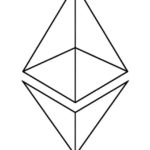tokenizations Future hinges on Unified Infrastructure
Tokenization is booming, with the market valued at $23 billion in 2025. Major players like coinbase, JP Morgan, and Citi are launching pilots. Yet, success depends on robust infrastructure.
The World Economic Forum predicts $4 trillion in tokenized assets by 2030. But liquidity gaps and inconsistent standards could hinder growth. Major firms are already involved. Coinbase seeks SEC approval for tokenized equities. JP Morgan executed $500 million in tokenized Treasury trades. Despite this progress,siloed efforts and fragmented systems pose risks. A unified, end-to-end infrastructure is crucial for scalability.
Currently, initiatives are isolated. Citigroup tokenizes trade finance, while Franklin Templeton runs blockchain-based funds. These efforts are fragmented, creating barriers. A Deloitte report shows 56% of institutional investors see fragmented infrastructure as a barrier. Strategic alliances, like Chainlink with DTCC, show promise. Though, true interoperability is lacking. Fragmentation limits liquidity and adoption. For instance, Citigroup and Goldman Sachs have made strides, but without seamless integration, the promise remains unfulfilled. Fragmentation stalls progress. A unified platform is needed for custody, compliance, and liquidity.
Unified infrastructure is key. Early platforms like Securitize offer lifecycle management. Though, more ambitious, end-to-end solutions are needed. Interoperable systems must meet institutional-grade requirements at scale.
Tokenization’s $4 trillion potential depends on cohesive infrastructure. Short-term alliances won’t suffice. The winners will build durable, interoperable, and inclusive systems. This is the foundation for the next generation of financial infrastructure.








